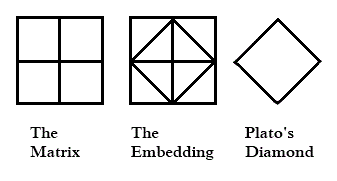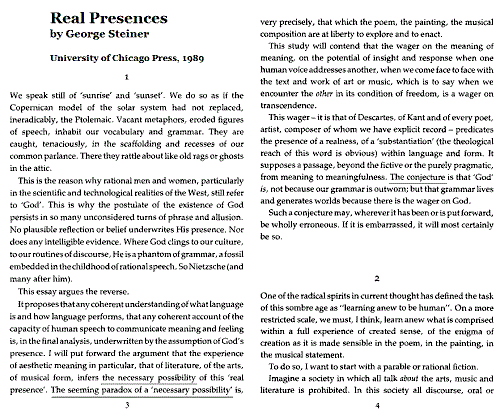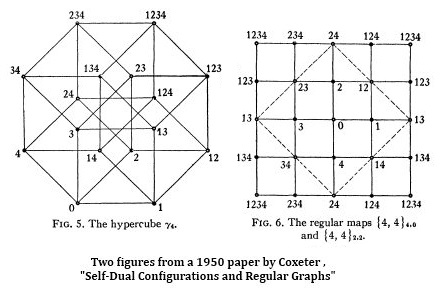Serious Numbers
A Yom Kippur
Meditation
"When times are mysterious
Serious numbers
Will always be heard."
— Paul Simon,
"When Numbers Get Serious"
"There is a pleasantly discursive treatment of Pontius Pilate's unanswered question 'What is truth?'"
— H. S. M. Coxeter, introduction to Richard J. Trudeau's remarks on the "story theory" of truth as opposed to the "diamond theory" of truth in The Non-Euclidean Revolution
Trudeau's 1987 book uses the phrase "diamond theory" to denote the philosophical theory, common since Plato and Euclid, that there exist truths (which Trudeau calls "diamonds") that are certain and eternal– for instance, the truth in Euclidean geometry that the sum of a triangle's angles is 180 degrees. As the excerpt below shows, Trudeau prefers what he calls the "story theory" of truth–
"There are no diamonds. People make up stories about what they experience. Stories that catch on are called 'true.'"
(By the way, the phrase "diamond theory" was used earlier, in 1976, as the title of a monograph on geometry of which Coxeter was aware.)

Excerpt from
The Non-Euclidean RevolutionWhat does this have to do with numbers?
Pilate's skeptical tone suggests he may have shared a certain confusion about geometric truth with thinkers like Trudeau and the slave boy in Plato's Meno. Truth in a different part of mathematics– elementary arithmetic– is perhaps more easily understood, although even there, the existence of what might be called "non-Euclidean number theory"– i.e., arithmetic over finite fields, in which 1+1 can equal zero– might prove baffling to thinkers like Trudeau.
Trudeau's book exhibits, though it does not discuss, a less confusing use of numbers– to mark the location of pages. For some philosophical background on this version of numerical truth that may be of interest to devotees of the Semitic religions on this evening's High Holiday, see Zen and Language Games.
For uses of numbers that are more confusing, see– for instance– the new website The Daily Beast and the old website Story Theory and the Number of the Beast.

















